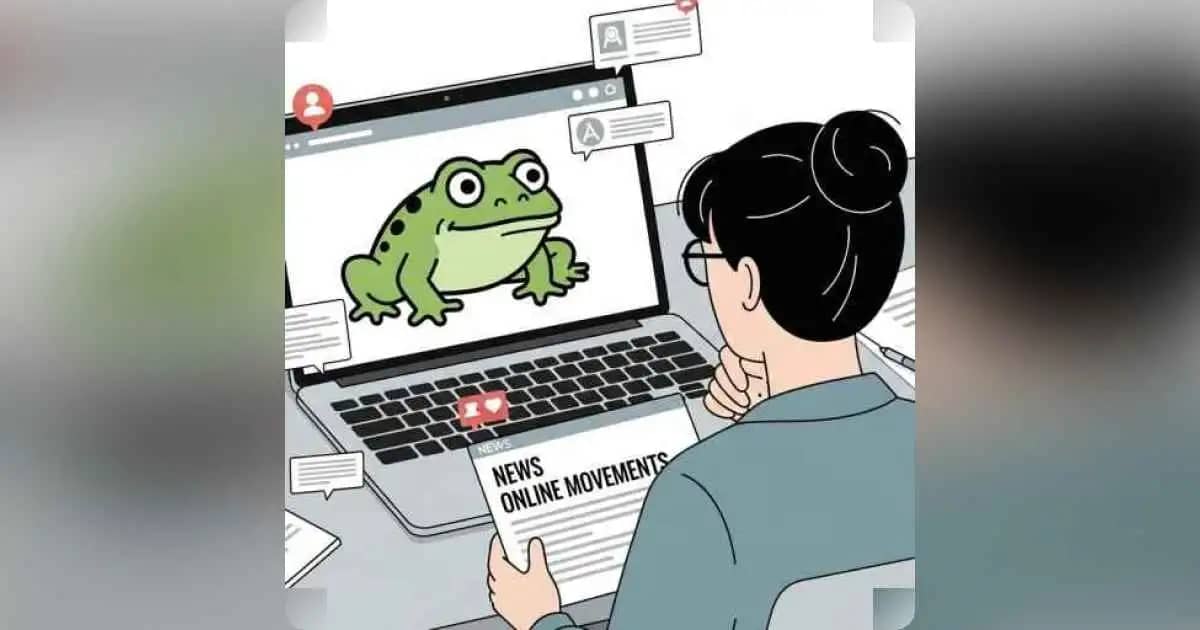
What Is a Groyper? Understanding the Groyper Movement and Nick Fuentes
Origins, key figures, and media coverage of the far-right online subculture
Introduction
Over the past several years, the word “groyper” has appeared across social platforms, political livestreams, podcasts, and news reports. Many people encountering it for the first time ask, “What is a Groyper?” or “Who are the Groypers?” because the term feels obscure and the Community behind it is intentionally internet-native.
At its core, the Groyper Movement is a loose network of far-right activists who blend meme culture, livestream personalities, and online Political confrontation. To understand how this movement formed and why figures like Nick Fuentes play a central role we need to explore its origins, beliefs, public actions, and media coverage.
Where the Name “Groyper” Comes From
The term “groyper” originates from a variant of the Pepe the Frog meme. This version depicts a chubby cartoon frog resting its chin on folded hands a pose that became known online as “the Groyper.”
While originally humorous, the image was later adopted by young far-right activists who used it as:
-
- A mascot
- A symbol of belonging
- A way to distinguish themselves from older “alt-right” figures
Today, searches like “what is a groyper” or “groyper meaning” typically refer not to the frog itself, but to the political identity that grew around the meme.
Key Figure: Who Is Nick Fuentes?
Any explanation of Groypers must include Nick Fuentes, a livestreamer and commentator who rose to prominence in the late 2010s.
Fuentes describes himself as a Christian nationalist, but watchdog groups and journalists frequently link his rhetoric to white nationalist and antisemitic themes. His stream mixes political commentary, irony, humor, and confrontational language making him a central, polarizing figure.
Searches like:
-
- “Who is Nick Fuentes?”
- “nick.fuentes”
- “Nick Fuentes groyper movement”
all point back to his outsized influence on the group.
Is “Groyper” a Slur?
The term “groyper” is not a slur, but it is often used pejoratively by critics to describe members of the movement. Within the community, it’s embraced as an identity; outside it, it can be used to label extremist behavior.
Beliefs and Themes of the Groyper Movement
While decentralized, Groypers share several recurring themes:
1. Nationalism & Immigration Restriction
Strong opposition to multiculturalism and support for strict immigration policy.
2. Hostility Toward Mainstream Conservatives
Groypers frequently accuse Republicans and conservative influencers of being “too moderate.”
3. Meme-Based Activism
Much of their communication happens through:
-
- Livestreams
- Coordinated online commenting
- Meme campaigns
- Viral clips
4. Blend of Irony and Extremism
Humor is used to mask or soften more radical messaging a tactic experts warn can ease people into extremist content without realizing it.
History and Timeline of the Groyper Movement
2015–2017: Meme Emergence
The Groyper frog spreads as a variant of Pepe on message boards.
2018: ideological identity forms
The meme becomes linked to far-right commentary, especially among very online youth.
2019: “Groyper Wars”
The group confronts conservative figures especially Turning Point USA at campus events.
2020–2023: bans and platform shifts
After bans from major platforms, many Groypers moved to alternative streaming websites.
2024–2025: continuing digital presence
The movement remains active online, especially during political flashpoints and media investigations.
The Groyper Wars: The Movement’s Turning Point
The Groyper Wars represent the movement’s most public moment.
Members attended conservative campus events hosted by:
-
- Charlie Kirk
- Ben Shapiro
- Dan Crenshaw
…and asked intentionally provocative questions designed to embarrass the speakers.
Their goals were to:
-
- Push conservatism further right
- Show mainstream influencers as “weak”
- Generate viral clips to spread online
These confrontations brought significant media attention, pushing searches like:
-
- “Who are the Groypers?”
- “What is a groyper?”
- “Nick Fuentes campus events”
into trending status.
Media Coverage and Investigations
Major outlets including The Daily Beast, The New York Times, and The Washington Post have published deep dives into the Groyper Movement. Coverage often emphasizes:
-
- Extremist rhetoric
- Youth targeting
- Online radicalization patterns
- Their meme-driven recruitment style
This type of reporting mirrors how newsrooms also cover broader issues such as US–China political tensions, like in analyses of congressional visits and trade policy (for example, in articles such as this breakdown of US–China congressional trips and tech competition).
/article/us-china-congressional-visit-trade-security-tech
How Groypers Use Search Visibility
Groypers understand that search trends = recruitability.
Every:
-
- confrontation
- investigative article
- viral clip
- platform ban
triggers a spike in searches for “groyper meaning”, “nick.fuentes”, or “what is a groyper?”
This strategy similar to how viral news spikes occur during global events like deportation controversies helps amplify fringe messaging.
/article/deportations-to-ghana-whats-really-happening
Symbols, Memes, and Variants
While the original Groyper frog is the most recognizable symbol, variants include:
-
- Cozy.tv-style animated frogs
- “Smug” or “thinking” Groypers
- Holiday or political versions used as avatars
- Meme clusters with nationalist or Christian imagery
These symbols help reinforce group identity and spread messaging in humorous or ironic packaging.
Comparison Table: Groypers vs. Alt-Right
| Feature | Groypers | Alt-Right |
| Peak years | 2018–present | 2015–2017 |
| Mascot | Groyper frog | Pepe the Frog |
| Key figure | Nick Fuentes | Richard Spencer |
| Strategy | Meme activism & confrontation | Ideological essays & rallies |
| Youth appeal | Higher | Lower today |
Why It Matters
Though smaller than mainstream political groups, Groypers demonstrate how:
-
- meme communities
- livestream personalities
- digital confrontation
can merge into a powerful online influence engine.
This mix of humor and ideology mirrors how misinformation spreads in other online spaces such as viral science misunderstandings (e.g., causes of natural disasters like earthquakes or tsunamis), where users need context to avoid misinterpretation.
/article/causes-of-volcanoes-earthquakes-and-tsunamis-explained
Similarly, young audiences can stumble into extremist spaces without recognizing the deeper ideology beneath the meme layer.
FAQ
Q1. What does “Groyper” mean?
A Groyper is someone aligned with an online far-right movement centered on memes, nationalism, and figures like Nick Fuentes.
Q2. Who is Nick Fuentes?
He is a U.S. livestreamer known for Christian nationalist rhetoric and leadership within the Groyper community.
Q3. Is the Groyper Movement the same as the Alt-Right?
They overlap ideologically, but Groypers represent a younger, meme-driven offshoot.
Q4. Why is The Daily Beast frequently mentioned?
They’ve published multiple investigative reports on the movement’s tactics and influence.
Q5. How do I avoid falling for extremist content online?
Use credible sources, fact-check claims, and understand that irony or humor can mask ideological agendas.
Some people find it helpful to diversify what they read, whether it’s global political coverage, tech trends (such as analyses of Intel, Nvidia, and AMD), or even scholarship guides for students looking for opportunities exposure to broader information reduces the influence of echo chambers.
Read more on tech:
/article/intel-stock-price-nvidia-amd-trends-intc-news
scholarships:
/article/2025-india-scholarship-guide-up-nsp-lic
Conclusion
So, what is a Groyper?
A Groyper is a member of a decentralized far-right online movement that blends memes, nationalism, and provocative political activism. From the chubby frog meme to confrontations during the Groyper Wars, the movement shows how internet culture and extremist ideology can intertwine.
Understanding the symbolism, the key figures, and the strategies behind Groypers and knowing how media covers such groups helps readers navigate online spaces with greater awareness.
Before you go:
If you want to understanad how online communities, political influencers, and viral meme cultures shape today’s Digital landscape, explore more of our in-depth explainers. From global politics to internet subcultures, The Story Circuit breaks down the stories shaping the world clearly, simply, and without noise.
Related article: When Celebration Turned Silent: Bondi Beach and a Community in Mourning




